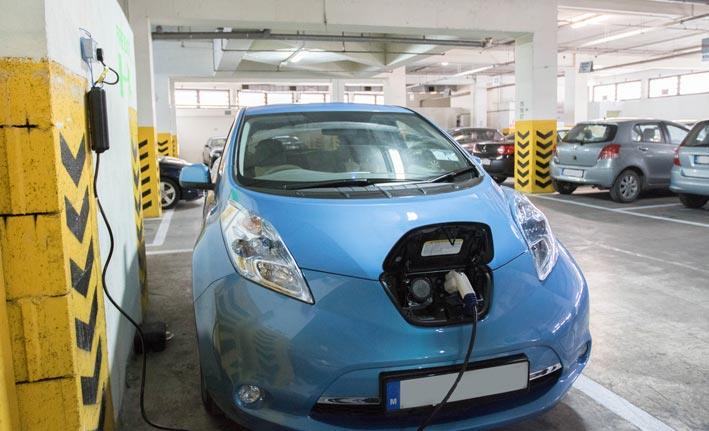The European Parliament's Environment Committee (ENVI) has proposed that car manufacturers will have to ensure that zero and low-emission vehicles - ZLEVs - (which emit less than 50g co2/km) have a 40 per cent market share of sales of new cars and vans by 2030, and 20 per cent by 2025.
A two-way bonus-malus system will be used to credit the manufacturers. However, for 2025 there is a 'grace' for the malus which implies that if manufacturers reach between 100 per cent and 98 per cent of the benchmark, they will not be penalised with a malus.
A higher target for reducing EU fleet-wide emissions by 2030 was also voted on. This was the headline point of the legislation on the reduction of automobile carbon dioxide emissions piloted by Labour MEP Miriam Dalli.
The target is to be set at 45 per cent by 2030, compared to the EU Commission's 30 per cent, with an intermediate target of 20 per cent by 2025. The legislation also sets similar targets for new vans.
While the report was adopted with 38 in favour, 23 against and seven abstentions, the targets were adopted with 41 in favour, 24 against and only one abstention. Most votes in favour were from the centre-left camp.
In addition, an amendment requiring the Commission to submit a proposal for post-2030 with a view to maintaining at least the same emissions-reduction trajectory achieved in the period up to the 2030 was adopted with 38 in favour, 28 against and one abstention.
MEPs agreed that manufacturers whose average CO² emissions exceed these targets will pay a premium to the EU budget, to be used, inter alia, for up-skilling workers affected by changes in the automotive sector.

Another important point of the legislation is the real-driving emission which was generally supported, with 40 in favour, 27 against and no abstentions. The amendments provide that compliance regarding emissions will be measured by means of a real-world CO² test.
Within two years, the EU Commission will table places for this test using a portable device, like that recently introduced for NOx. Until such time as the real-world CO² test becomes applicable, CO² emissions must be measured on the basis of data from cars' fuel consumption meters.
It will also be subject to a limit set for each manufacturer in 2021 as a percentage difference, that is not to be exceeded, between that data and the manufacturer's specific CO² emissions that is measured for the purpose of type approval certification procedures initiated from 2021 onwards.
Where a manufacturer's specific CO² emissions exceed the limit, the specific CO² emission target for that manufacturer, which is used for the purpose of compliance with this Regulation, shall be adjusted depending on the amount exceeded.
The real-driving emissions test must be up and running from 2023.
A joint letter from two European Commissioners had suggested that WLTP (Worldwide Harmonised Light Vehicle Test Procedure), which measures car emissions, could be inflated by some manufacturers to improve their chances of meeting post-2020 CO² targets.

With regard to this, the proposal to ensure that the starting point for the future target is based on WLTP-measured emissions and not on WLTP-declared emissions was adopted without an electronic vote.
By the end of 2019, the EU Commission will also have to propose legislation to provide consumers with accurate and comparable information on the fuel consumption, CO² emissions and pollutant emissions of new cars.
From 2025, car manufacturers will have to report to the Commission the lifecycle CO² emissions of new cars and vans put on the market, using a common methodology.
No later than 31 December 2026, the Commission will submit a report with an analysis of the overall life-cycle emissions from new light-duty vehicles, including an analysis of options for possible regulatory measures, in order to better direct future policy efforts in emissions reductions in the sector. This was agreed upon with no electronic vote.
The next step will be a plenary vote on the report and a negotiation mandate by the full House during its 1-4 October plenary session in Strasbourg.
Dalli said on Monday evening, following the approval of the legislation by the committee, that she had faced 'great' opposition from conservative groups and also intensive lobbying by the automobile industry against the legislation.
Speaking in a press conference on Tuesday, she said that the legislation was a 'pragmatic result' that strikes a 'very delicate balance' between all stakeholders.
The set of legislation affects not just the environment or climate change, but also citizen's health, workers and the car industry itself, she said, which is why striking the balance was so important.

Dalli explained that the policy was written in such a manner to propose positive change and innovation. The aim is not to promote one technology over another, she said, but to ensure that transport contributes its fair share to reduce emissions.
Furthermore, she said that with this legislation, investment and jobs can be attracted to the European economy. The aim is to create jobs in the EU for EU citizens.
Transport is the only major sector in the EU where greenhouse gas emissions are still rising. In order to meet the commitments made at COP21 in 2015, the decarbonisation of the entire transport sector needs to be accelerated, on the path towards zero emissions by mid-century.
At the same time, the global automotive sector is changing rapidly, in particular in electrified powertrains. If European car manufacturers engage late in the necessary energy transition, they risk losing their leading role, say MEPs.